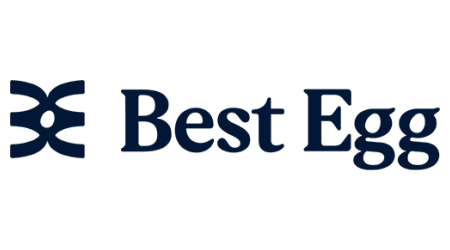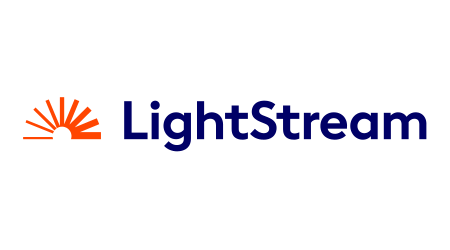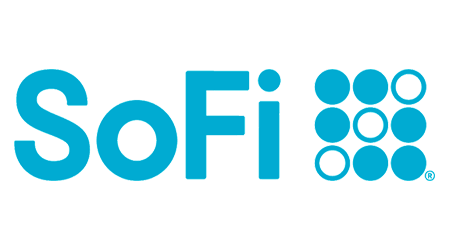Maybe you need a $25,000 personal loan to consolidate credit card debt, cover unexpected medical expenses or make home improvements. To qualify for a personal loan of this size, you’ll typically need a good credit score, but some lenders may be more flexible. Be sure to explore all lending options, including online lenders, banks and credit unions to find the best deal.
Compare $25,000 personal loan lenders
Use Finder’s personal loan table to compare interest rates and loan terms from lenders that offer $25k personal loans. Select your state, credit range, loan amount and purpose to start shopping right away.
Compare other products
We currently don't have that product, but here are others to consider:
How we picked theseWhat is the Finder Score?
The Finder Score crunches 6+ types of personal loans across 50+ lenders. It takes into account the product's interest rate, fees and features, as well as the type of loan eg investor, variable, fixed rate - this gives you a simple score out of 10.
How to get a $25,000 personal loan
Follow these steps when you’re ready to apply for a $25,000 personal loan.
- Calculate what you can afford. One of the easiest ways to figure out how much you can afford is to run the numbers in your budget to determine how much you can afford to pay toward a loan every month. From there, search for a loan that fits your budget.
- Explore your options. Find lenders that offer $25K personal loans with your purpose in mind. Online lenders are often a good place to start, but you may also want to talk to your regular bank or credit union.
- Evaluate multiple lenders. Compare interest rates and loan terms to find the best deal. Consider additional fees — such as origination fees, which could cost up to 10% of the loan — or prepayment penalties. Finally, make sure you meet the lender stipulations regarding credit scores and income requirements.
- Get prequalified. Once you’ve narrowed the field, it’s time to get prequalified. Lenders generally conduct a soft credit check to determine your interest rate for a $25K personal loan. However, the interest rate from a preapproval is just an estimate and could change with the formal approval process.
- Gather your documents. Information you may need to provide includes proof of identity, Social Security number, proof of address and employment and income verification. Depending on the details of your loan, lenders may require further documentation.
- Apply. If you find a loan that meets your needs based on the prequalification, follow the steps to complete your application and submit the required documents. The personal loan approval process is often streamlined, so you should have your answer within a day or two.
Eligibility requirements for a $25,000 personal loan
Requirements may be more or less strict depending on the lender. However, in general, lenders require you to meet the following criteria:
- Be over 18. In most states, you must be at least 18 years old to take out a loan.
- Have good credit. Personal loan lenders vary widely with credit score requirements — many want to see scores of at least 600 or more, while other lenders may accept lower credit scores.
- Proof of income. Usually, this means providing W-2s or paystubs. But if you’re a freelancer or contract worker, you may need to show alternative documentation, such as tax returns or bank statements.
- Have a low debt-to-income (DTI) ratio. Your DTI compares your monthly income to your monthly debt payments. Most lenders want a DTI of 43% or less for a $25K personal loan — although 35% or lower is even better. You can calculate your DTI by dividing your monthly debt payments by your gross monthly income.
- Be a US citizen or permanent resident. Some banks lend money to non-residents, but you may need to meet other requirements, such as a co-signer or collateral.
How to increase your chances of loan approval
One of the best ways to increase your odds of qualifying for a $25,000 personal loan is to boost your credit score. You can do this by paying down your existing debts, becoming an authorized user on someone else’s credit card (who has excellent credit) and paying your bills on time.
Start by getting a copy of your free credit report to make sure there aren’t any errors. If there are, you can dispute the errors and have them removed. This is one of the fastest ways to raise your credit scores.
Other options to boost your chances of loan approval are getting a co-signer with strong credit or offering up collateral, such as a car.
Can I get a $25K personal loan with bad credit?
For the most part, you’ll need good credit to qualify for a $25,000 personal loan. While some lenders may offer personal loans to borrowers with poor credit (generally under 600), you could wind up with an interest rate comparable to a credit card.
How much does a $25,000 personal loan cost?
Banks offset the risk of lending money by charging interest, which could be anywhere from about 6% to 36% for a personal loan. The rate you’re offered varies widely, because it depends on your credit score, the lender you choose, the loan amount and other factors.
You may also have to pay an origination fee, which can range from 1% to 10% of the loan. Usually, this fee, which may also be referred to as an administrative or processing fee, is deducted from the loan amount. For example, if your loan amount is $25,000 and the origination fee is 10%, you’ll only receive $22,500 in loan proceeds. Some lenders won’t charge an origination fee, but they might make up for that with a higher interest rate.
Keep in mind the loan term when you’re considering the loan’s total cost. For instance, a longer loan term keeps your monthly payments lower, but you’ll pay more interest over the loan’s life.
Calculate your monthly loan payments
Use our loan calculator to compare monthly payments based on a $25,000 personal loan at different interest rates and loan terms.
$25,000 loan repayment calculator
See how much you'll pay|
Your loan
|
|---|
| Loan amount |
|
$
|
| Loan terms (in years) |
|
|
| Interest rate |
|
%
|
Fill out the form and click on “Calculate” to see your estimated monthly payment.
or
Compare personal loans nowBased on your loan terms
| Principal | $ |
|---|---|
| Interest | $ |
| Total Cost | $ |
Five tips to get a lower interest rate on your personal loan
- Enlist a cosigner or co-borrower. If you apply with a lender that allows a cosigner, you’ll add security to your loan application, which could up your chances of getting a lower interest rate.
- Improve your credit scores. A higher credit score signals less risk to lenders, which means lower rates for you.
- Consider a secured loan. If you have collateral to bring to the table, such as a car or home, this could mean lower rates for you. However, if you can’t repay the loan, your assets are on the line.
- Shop multiple lenders. Compare loans from several lenders to ensure you’re getting the best deal for your situation.
- Request a shorter loan term. Shorter loans tend to come with lower interest rates.
How to pay off $25,000 in debt
It’s a smart move to figure out how to pay back your loan as efficiently as possible. You can just stick to the set repayment schedule, but there are a few easy ways to reduce the overall cost of the loan.
- Pay more than your monthly payment. Anything extra you can add to your monthly loan payment will shorten the loan’s length, resulting in fewer interest charges.
- Try payment splitting. This is another strategy to reduce interest charges. Simply pay half of your bill 15 days before the due date and the remainder on or before the due date.
- Refinance the loan. As time passes, interest rates may go down. If that happens, you may be able to refinance the remaining balance at a better interest rate.
Alternatives to personal loans
If a personal loan isn’t the right solution for you, consider some alternatives.
- Home equity loan. If you own your own home and have equity in it, you may qualify for a home equity loan. You may get a better rate than a personal loan and usually have longer to repay.
- Home equity line of credit (HELOC). A HELOC is similar to a home equity loan in that you’re borrowing against your home’s equity, but instead of a lump sum payment, you’ll have access to a revolving line of credit.
- Business loan. If you plan to use that $25,000 personal loan to grow your small business, consider a small business loan or SBA loan instead.
- Personal lines of credit. These types of loans may be a good fit if you need financing for ongoing projects since they provide a way to draw on funds as needed, as an alternative to a credit card.
Sources
Ask a question
More guides on Finder
-
Holiday Borrowing: What $1,000 Really Costs Across 5 Ways to Get Cash
The best way to finance the holidays might not be your credit card.
-
Simple Path Financial Review: Low APR, Flexible Requirements (2026)
Flexible loans no matter your financial history, but make sure you understand the terms.
-
10 Emergency Loans for Good and Bad Credit
Emergency payday loans can give you quick and easy access to funds. Compare your options and find a lender to help see you through.
-
LendingPoint Personal Loans Review: Potentially High Rates
Fast funding for fair credit borrowers who need small loans.
-
Wells Fargo personal loans review
A Wells Fargo personal loan could provide you with the financing you need to make the next big step in your life. Learn more about the rates and terms.
-
OneMain Financial: No Credit Score Needed But Higher Costs
Explore OneMain Financial’s personal loans with low requirements, quick approvals and options for all credit types.
-
Happy Money: Consolidate High Interest Credit Card Debt
Looking to tackle credit card debt? Find out if Happy Money’s loan options fit your needs.
-
SoFi Personal Loans Review: For Good Credit Borrowers
SoFi offers personal loans at competitive rates with extra perks for borrowers. Learn what you need to qualify and how to apply with this top online lender.
-
Best Egg Personal Loans Review: Fast Funding & Good Rates
Best Egg offers personal loans up to $50,000; see how they compare to other lenders.
-
LightStream Review: Big Loans & Good Rates for Good Credit
Financing up to $100,000 — but only for borrowers with good credit.




